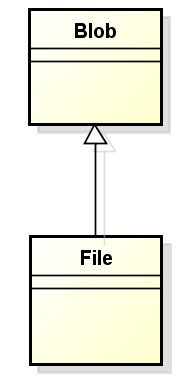Sometimes, we want to download files from server, but when search about downloading file in Angular. There are so much chaos information that make me refused. So, after spending two days to find out about it, I must write something about this topic.
Let’s get started.
Table of contents
- Understanding about Blob
- Understanding about HttpClientModule and HttpModule
- To prepare some modules for downloading excel file
- Working with sample project
- Wrapping up
Understanding about Blob
According to wikipedia.com, we have:
A Binary Large Object (BLOB) is a collection of binary data stored as a single entity in a database management system. Blobs are typically images, audio, or other multimedia objects, though sometimes binary executable code is stored as a blob.
–> A blob has its size and MIME type. Blob data is stored in the memory or file system depending on the browser and blob size.
The File interface is based on Blob, inheriting blob functionality and expanding it to support files on the user’s system.

So to download our file from server, we will create object of File that contains Blob object.
Below is the syntax for creating a Blob object:
let blob = new Blob(array, [, options]);
-
array: an Array of
ArrayBuffer,ArrayBufferView,Blob,DOMStringobjects, or a mix of any of such objects, that will be put inside the Blob. -
options: an BlobPropertyBag dictionary which may specify two attributes:
-
type: default value is “”, that represents the MIME type of the content of the array that will be put in the blob.If we want to know about the MIME type, we can refer this link.
-
endings: default value is “transparent”, that specify how strings containing the line ending character\nare to be written out.
-
Understanding about HttpClientModule and HttpModule
- In version 4.3.x, Angular releases the new
HttpClientmodule has some changes when comparing with traditionalHttpmodule with the link.- Interceptors allow middleware logic to be inserted into the pipeline.
- Immutable request / response objects.
- Progress events for both request upload and response download.
- Types, synchronous response body access, including support for JSON body types.
-
JSON is an assumed default and no longer need to be explicitly parsed.
-
Request JSON data
// Http module this.http.get(url) // extract the data in http response .map((response: Response) => response.json() as User) .subscribe((data: User) => { console.log(data); }); // HttpClient module this.http.get(url) .subscribe((data: User) => { console.log(data); }); -
Request non-JSON data
In
HttpClientmodule, if we need to parse any other types of response like text or blob, then we need to add theresponseTypein the request.// HttpClient module this.http.get(url, { responseType: 'blob' }) .subscribe(data => { console.log(data); }); // Http module this.http.get(url) .map((response: Response) => { // response.arrayBuffer() // returns body as an ArrayBuffer // response.blob() // returns body as a Blob return response.text(); }) .subscribe((data: string) => { console.log(data); }); -
Reading Http response
In
Httpmodule, the full response is sent to the client.this.http.get(url) .subscribe((response: Response) => { console.log(response); });In
HttpClientmodule, we need to addobserveoption to specify which kind of data will be returned to the client. Some values of observe option:body: return parsed body.response: returns the full response. (Observable of HttpResponse)events: returns the full event stream. (Observable of HttpEvent)
-
- Post-request verification and flush based testing framework.
-
The new
HttpClientmodule requirestslibin runtime, so we have to install itnpm install tslib --save, and updatesystem.config.jsif we use SystemJS:map: { ... 'tslib': 'npm:tslib/tslib.js' }And we need to another mapping if we use SystemJS:
'@angular/common/http': 'npm:@angular/common/bundles/common-http.umd.js',
To prepare some modules for downloading excel file
-
httpmoduleAll methods in
httpmodule that return an RxJS Observable-based API, so, we need to subscribe.-
If we do not subscribe to these observable, nothing will happen.
-
If we subscribe multiple times to these observalbes, multiple HTTP requests will be triggered.
-
This particular type of Observable are single value streams. If the Http request is successful, these observables will emit only one value and then complete.
-
These observables will emit an error if the Http request fail.
npm install @angular/http@latest // In service file import { Http } from ''@angular/http; -
-
file-savermoduleFileSaver.js is used to save files on the client side, and is perfect for web apps that generates files on the client. If the file is coming from the server, we should to use
Content-Dipositionattachement response header as it has more cross-browser compatibility.Disadvantages of file-saver module:
- The size of RAM
- The max blob size limitation
–> So, we can use alternative way, it is StreamSaver.js.
Installation:
npm install file-saver --save // use for typescript npm install @types/file-saver --save-dev
Working with sample project
The followings are the sample project about downloading excel file in Angular.
We can find some other ways to download file. And now, this is the first way to do it.
Below is the service file.
// File.service.ts
import { Injectable } from '@angular/core';
import { Http, ResponseContentType, RequestOptions } from '@angular/http';
@Injectable({
provideIn: 'root'
})
export class FileService {
public url = '...';
constructor(private http: Http) {
// nothing to do
}
download() {
const options = new RequestOptions({
responseType: ResponseContentType.Blob
});
return this.http.get(url, options);
}
}
And this is the component file.
import { Component, OnInit } from '@angular/core';
import { saveAs } from 'file-saver';
@Component({
selector: 'app-parent',
templateUrl: `
<button type="button" (click)="downloadFile();">Download</button>
`,
styleUrls: ['./app.component.scss']
})
export class AppComponent implements OnInit {
fileName = '...';
constructor(private fileService: FileService) {
// nothing to do
}
ngOnInit() {
// do something
}
downloadFile() {
// check something
// ...
// download file
this.fileService.download().subscribe(
res => {
const blob = new Blob([res.blob()], { type : 'application/vnd.ms.excel' });
const file = new File([blob], fileName + '.xlsx', { type: 'application/vnd.ms.excel' });
saveAs(file);
},
res => {
// notify error
}
);
}
}
Wrapping up
Refer:
http://qnimate.com/an-introduction-to-javascript-blobs-and-file-interface/
https://stackoverflow.com/questions/40996962/downloading-xlsx-file-in-angular-2-with-blob
https://blog.hackages.io/angular-http-httpclient-same-but-different-86a50bbcc450
https://stackblitz.com/edit/angular-blob-file-download
https://stackoverflow.com/questions/21628378/display-blob-pdf-in-an-angular-app
https://github.com/eligrey/FileSaver.js/wiki/Saving-a-remote-file#using-http-header
https://github.com/jimmywarting/StreamSaver.js
https://developer.mozilla.org/en-US/docs/Web/API/File/Using_files_from_web_applications
Http module
https://blog.angular-university.io/angular-http/
https://skryvets.com/blog/2017/11/26/simply-about-new-httpclient-in-angular/
https://angular.io/guide/http#reading-the-full-response
https://blog.fullstacktraining.com/angular-http-vs-httpclient/